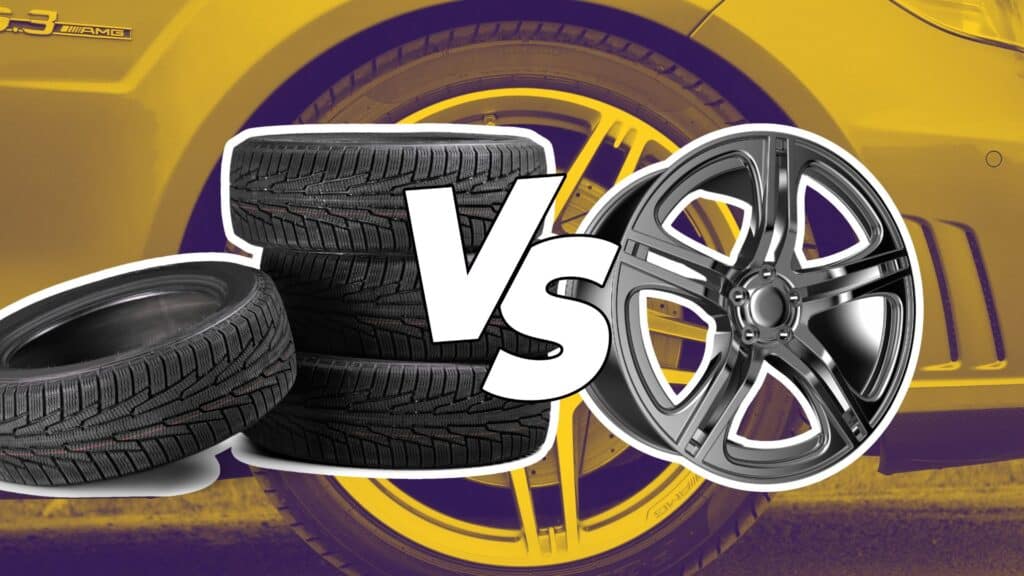Wheels and tires are often confused, yet they’re distinct components crucial to our vehicles.
Many of us use these terms interchangeably, not realizing the unique roles each plays in keeping us moving safely on the road.
This lack of understanding can lead to poor maintenance decisions and potentially unsafe driving conditions.
But don’t worry – by the end of this article, you’ll have a clear grasp of the difference between wheels and tires, their functions, and how they work together.
We’ll explore the fascinating evolution of both components, from their humble beginnings to the high-tech versions we see today.
Get ready to discover the unique development paths of wheels and tires and how this knowledge can help you make better choices for your vehicle.
Evolution of Tires
1. 1888: Invention of the Pneumatic Tire by Carl Benz

Carl Benz’s pneumatic tire invention in 1888 changed the automotive world. Before this, vehicles rolled on hard wooden or metal wheels, making for a bumpy ride.
Benz’s innovation – a metal-framed tire covered with rubber and filled with air – greatly improved shock absorption and comfort.
This groundbreaking design laid the foundation for future tire developments and quickly became the industry standard.
2. 1905: Addition of Tread for Better Grip

In 1905, tire makers added tread patterns to their products, significantly enhancing grip on various road surfaces.
Early pneumatic tires had smooth surfaces, which were ineffective on wet or muddy roads.
Introducing tread patterns helped channel water away from the tire’s surface, reducing skidding risks and improving traction.
This advancement allowed vehicles to handle different terrains more effectively and safely, leading to the widespread adoption of treaded tires.
3. 1931: Introduction of Synthetic Rubber by Du Pont

Du Pont’s introduction of synthetic rubber in 1931 marked a major step forward in tire manufacturing.
Natural rubber, used in early tires, had limitations, including vulnerability to wear and environmental damage.
Synthetic rubber offered improved resistance to abrasion, aging, and weather conditions, extending tire lifespan.
This innovation reduced reliance on natural rubber and allowed for more consistent tire quality and performance.
4. 1940s: Development of Tubeless Radial Tires
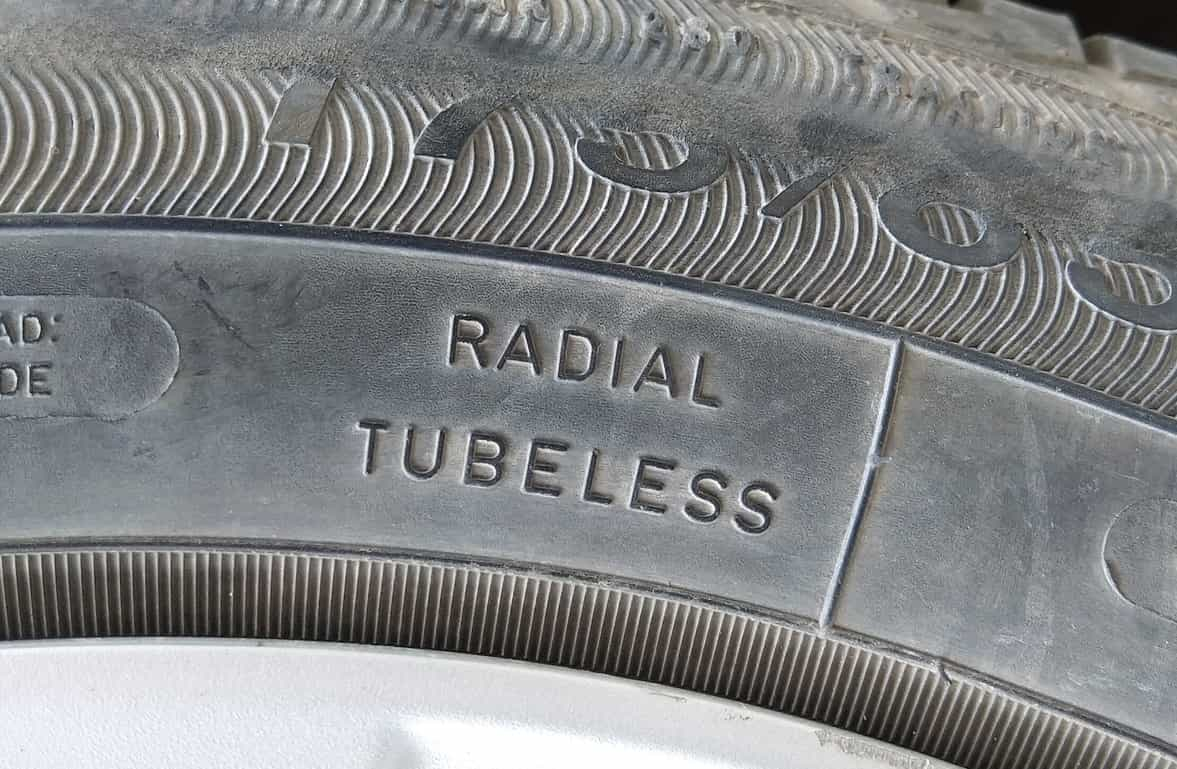
The 1940s saw the development of tubeless radial tires, improving safety, durability, and efficiency.
Tubeless tires eliminated the need for an inner tube, reducing sudden blowout risks and simplifying maintenance.
Radial construction, reinforcing tires with steel belts, provided better stability and tread wear.
These advancements improved fuel efficiency, smoother rides, and longer-lasting tires, making radial tires the new standard.
Modern Advancements of Tires
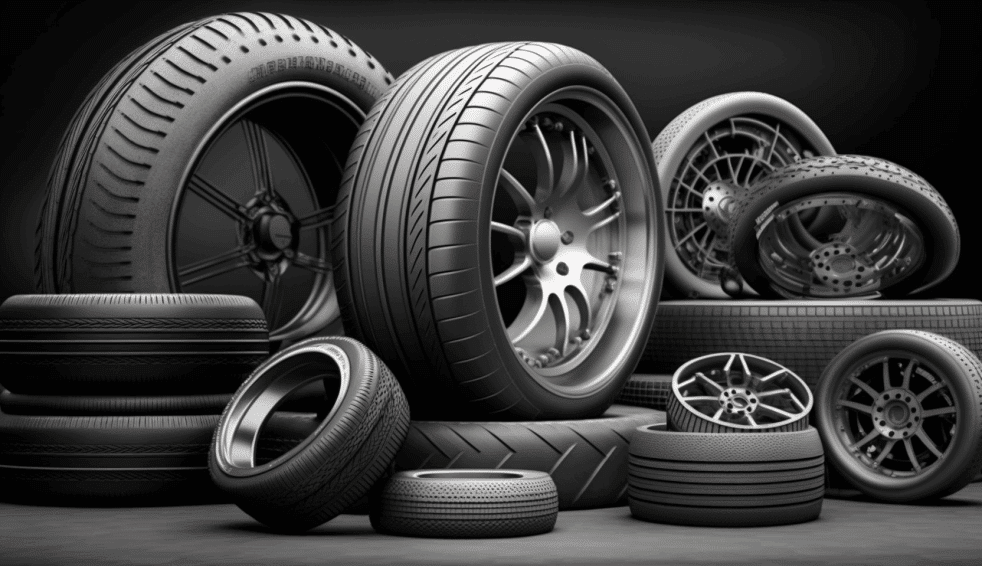
Recent tire innovations cater to diverse driving conditions and enhance overall vehicle performance.
- Snow Tires: Snow tires feature deeper tread patterns and softer rubber compounds, maintaining flexibility in cold temperatures and providing a superior grip on snow and ice.
- Run-Flat Tires: Run-flat tires allow continued driving after a puncture, eliminating the need for immediate roadside changes.
- All-Season Radials: All-season radials offer balanced performance in various weather conditions, combining the benefits of summer and winter tires into a versatile solution.
Evolution of Wheels
1. Early Wheels in Mesopotamia and China

The wheel’s invention in Mesopotamia and independently in China was a turning point in human history.
The oldest known wheel, dating back to around 3500 BC in Mesopotamia, was a simple yet ingenious device.
These early wheels were solid wooden disks, mainly used for pottery and basic carts.
In China, evidence of wheeled vehicles appeared around 2800 BC, showing how this innovation spread across ancient civilizations, reshaping transportation and trade.
2. 1000 BC: Iron-Rimmed Wheels by the Celts

Around 1000 BC, the Celts introduced iron-rimmed wheels, a significant upgrade in wheel technology.
These iron-rimmed wheels offered greater strength and wear resistance than their wooden counterparts. Commonly used on chariots and other vehicles, they improved efficiency and longevity.
This innovation allowed for heavier loads and longer travel distances, advancing transportation and warfare techniques.
Modern Innovations of Wheels
1. 1910: Introduction of the All-Steel Wheel
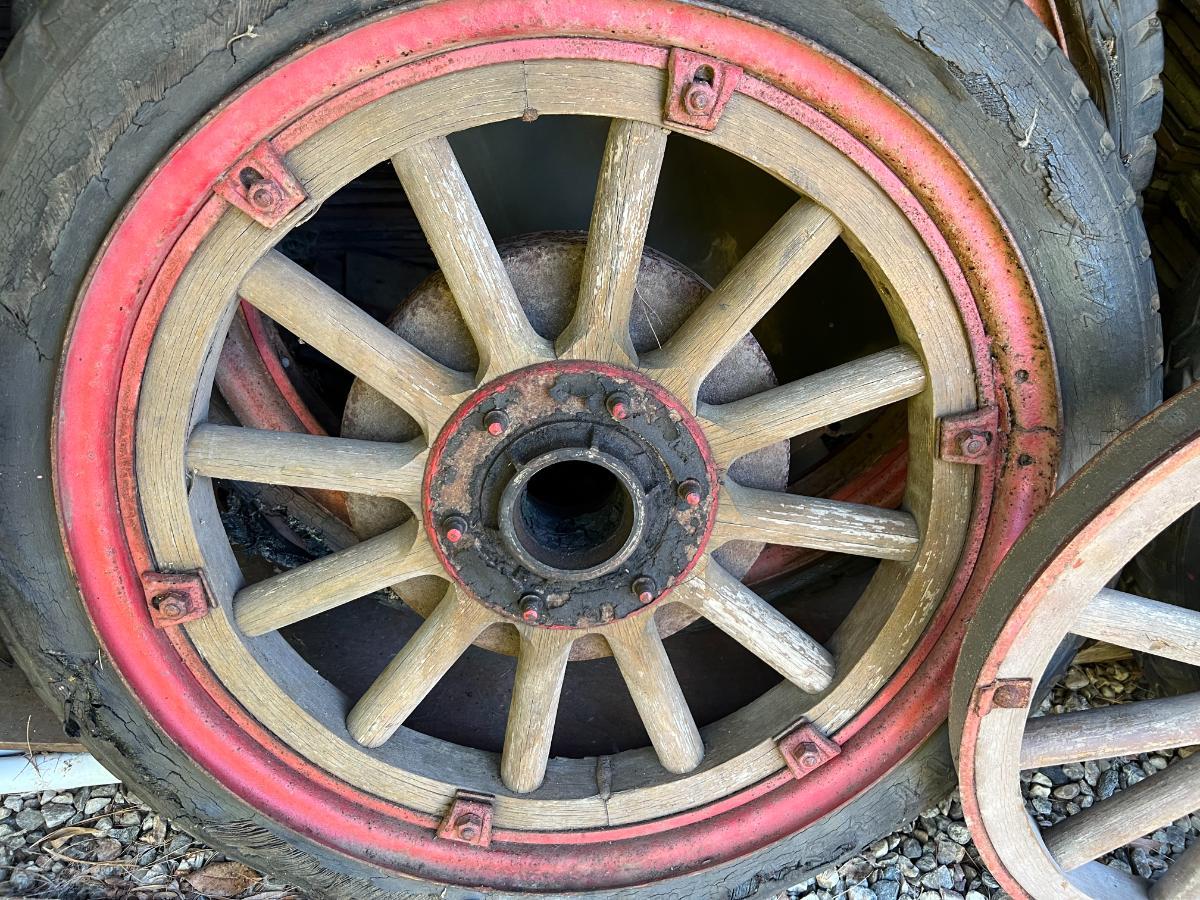
Introduced in 1910, the all-steel wheel marked a major leap in wheel durability and manufacturing efficiency. These wheels replaced wooden and wire-spoked versions, providing superior strength and reliability.
Steel’s use allowed for mass production and standardization, reducing costs and improving accessibility.
This innovation set a new industry standard, paving the way for modern automotive wheels.
2. 1930s: Cast Wheels
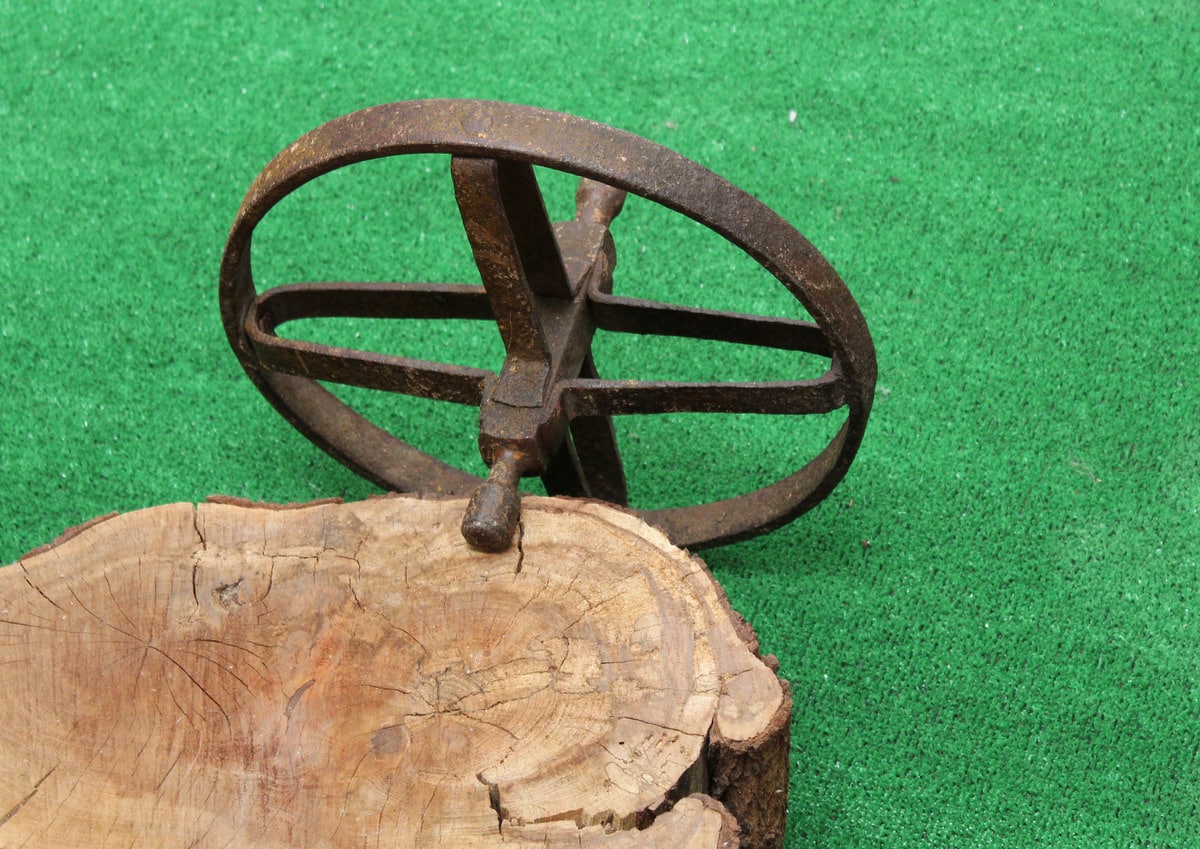
The 1930s saw the development of cast wheels, bringing a more robust and versatile design to vehicles. Made by pouring molten metal into molds, cast wheels allowed for complex shapes and designs.
They offered improved strength and were less prone to damage than earlier types.
The ability to create intricate designs also added style to vehicles, appealing to consumers’ aesthetic preferences.
3. 1960s: Popularity of Magnesium Alloy Wheels
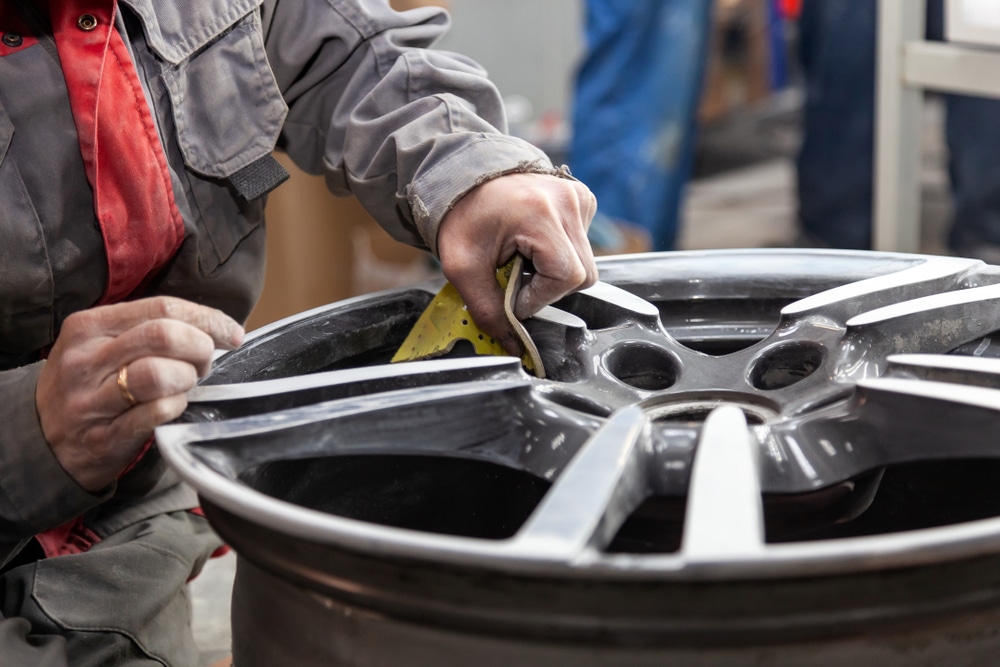
Magnesium alloy wheels gained popularity in the 1960s, offering a lightweight yet strong option for high-performance vehicles.
These wheels provided an excellent strength-to-weight ratio, crucial for sports cars and racing. They also dissipated heat efficiently, reducing tire overheating risks.
However, high costs and corrosion susceptibility limited their widespread use, leading to the development of aluminum alloy alternatives.
A Detailed Comparison Between Wheels and Tires
| Category | Tires | Wheels |
|---|---|---|
| Basic Definitions | Rubber coverings provide traction | Rigid circular frames supporting the tires |
| – Ensure vehicle grip on various surfaces | – Provide structural support and stability | |
| – Absorb road shocks for a smoother ride | – Connect the tire to the vehicle’s axle | |
| Key Components | Tread: Outer part contacting the road | Rim: Outer edge holding the tire |
| Sidewall: Side portion, lateral stability | Hub: Central part connecting to axle | |
| Beads: Steel wires ensure a tight fit. | Spokes: Structural support from the hub | |
| Carcass: Main body, layers of fabric/steel | Valve Stem: For tire inflation/deflation | |
| Belt: Steel belts under the tread | Center Bore: Central opening fitting hub | |
| Material Composition | Natural and Synthetic Rubber: Flexibility, durability | Metal Alloys (Aluminum, Steel): Strength, lightweight |
| Steel: Beads and belts reinforcement | ||
| Fabric: Carcass structural support | ||
| Overall Functions | – Provide traction and grip | – Support the tire and vehicle load |
| – Absorb shocks for a smooth ride | – Affect handling and performance | |
| – Influence fuel efficiency | – Contribute to vehicle aesthetics |
Role in Vehicle Performance

1. Traction and Stability
Tires and wheels play crucial roles in a vehicle’s traction and stability.
Tires
Tires provide the essential grip on the road surface, enabling effective acceleration, braking, and cornering.
Their tread patterns are specially designed to enhance grip in various conditions, whether wet, dry, or snowy. Proper tire inflation and maintenance are key to ensuring optimal traction.
Wheels
Wheels offer stability by supporting the tires and improving the vehicle’s overall handling.
The design and material of wheels, including their size and alloy composition, significantly affect the vehicle’s balance and stability.
Larger wheels can improve high-speed stability, while smaller ones may enhance maneuverability.
2. Fuel Efficiency
Both tires and wheels contribute to a vehicle’s fuel efficiency.
Tires
Tires with lower rolling resistance require less moving energy, improving fuel economy. Selecting tires appropriate for your driving conditions can optimize efficiency.
For instance, summer tires may offer better fuel economy in warm conditions than all-season tires.
Wheels
Lightweight wheels, such as those made from aluminum or carbon fiber, reduce the vehicle’s overall weight, particularly its unsprung weight.
This reduction lowers the engine load, improving fuel consumption and reducing emissions.
The impact of wheel weight on fuel efficiency is often underestimated but can be significant, especially for performance vehicles.
3. Load Support and Impact Absorption
Tires
Tires are crucial in supporting the vehicle’s weight and absorbing road impacts. The air pressure within tires helps distribute the vehicle’s weight evenly, ensuring stability and safety.
Tires with adequate tread depth can better absorb shocks from road irregularities, providing a smoother ride.
Wheels
Wheels provide the necessary structural strength to support the vehicle’s weight and withstand road impacts.
Made from durable alloys, wheels must maintain their structural integrity to handle the vehicle’s weight and prevent deformation or failure under load.
This strength is essential for ensuring a safe driving experience, especially when navigating rough terrains or carrying heavy loads.
4. Steering and Handling
Tires
Different tire designs, such as performance or all-terrain tires, can significantly impact how quickly and accurately the car responds to steering commands.
Proper tire alignment and inflation are crucial for responsive and predictable handling.
Wheels
Wheels ensure rigidity and control, maintaining the alignment and position of tires.
They must be rigid enough to prevent flexing during turns, ensuring the tires remain in proper contact with the road.
The balance and design of wheels can influence the vehicle’s handling characteristics, such as responsiveness and stability, particularly during high-speed maneuvers or sharp turns.
Selecting the Right Tires and Wheels
| Category | Tires | Wheels |
|---|---|---|
| A. Vehicle Requirements | – Follow manufacturer recommendations for size, type, and pressure. | – Follow manufacturer specifications for size, material, and design. |
| – Ensures optimal performance, safety, and fuel efficiency. | – Ensures proper fit, stability, and compatibility with the vehicle. | |
| B. Driving Conditions | – Winter Driving: Select winter tires with deep treads and softer rubber compounds. | – Winter Driving: Choose wheels that can accommodate winter tires and resist corrosion. |
| – Performance Driving: Choose performance tires with a firmer grip. | – Performance Driving: Opt for lightweight alloy wheels for improved handling and speed. | |
| – Off-Roading: Opt for all-terrain tires for rough terrains. | – Off-Roading: Select durable wheels that can withstand impacts and rough conditions. | |
| C. Safety and Comfort | – Look for tires with advanced tread designs to prevent hydroplaning and improve traction. | – Choose wheels made from strong materials like aluminum or steel to withstand impacts. |
| – Ensure proper tire pressure and alignment for a comfortable ride. | – Ensure wheels are properly balanced to avoid vibrations and enhance ride quality. | |
| D. Budget Considerations | – Invest in high-quality tires to reduce frequent replacements and improve longevity. | – Consider the total cost of ownership, including maintenance and potential fuel savings. |
| – Compare brands and read reviews for cost-effective options without compromising quality. | – Compare brands and materials to find durable, affordable wheels. |
Maintenance Tips
1. Regular Tire Rotation
Rotating your tires every 5,000 to 8,000 miles is important to ensure even wear and extend their life.
This practice helps maintain balanced handling and traction, which is crucial for your safety on the road.
By switching the position of your tires, you’re distributing wear more evenly across all four tires, potentially saving you money in the long run by avoiding premature replacements.
2. Wheel Alignment Checks
It’s wise to have your wheel alignment checked annually or whenever you notice handling issues like your vehicle pulling to one side.
Proper alignment ensures your wheels are positioned correctly, which not only improves handling but also helps prevent uneven tire wear.
This can lead to better fuel efficiency and a smoother, safer ride.
3. Maintaining Proper Tire Pressure
Make it a habit to check your tire pressure monthly, including your spare tire.
Proper inflation is critical for optimal performance, fuel efficiency, and tire longevity.
Underinflated tires can lead to increased wear, reduced fuel economy, and even blowouts, while overinflated tires can result in a harsh ride and uneven wear patterns.
4. Cleaning Wheels and Tires
Regular cleaning of your wheels and tires isn’t just about aesthetics.
It’s an important step in preventing corrosion on your wheels and tire degradation.
Use appropriate cleaners to remove brake dust, road grime, and other contaminants that can damage the finish of your wheels or compromise the integrity of your tires over time.
5. Inspecting for Damage
Periodically inspect your tires for signs of damage, such as cracks, bulges, or objects lodged in the tread.
If left unaddressed, these issues can lead to tire failure and potentially dangerous situations on the road.
Also, check your wheels for signs of bending or cracking, especially after hitting potholes or curbs. Early detection of damage can prevent more serious problems down the line.
Conclusion
As we’ve explored the fascinating evolution and crucial roles of wheels and tires, it’s clear that these components are far more than just round objects that keep our vehicles moving.
They’re marvels of engineering, constantly evolving to meet our changing safety, efficiency, and performance needs.
Understanding the difference between wheels and tires isn’t just about knowing your vehicle better – it’s about making informed decisions that can impact your driving experience, fuel economy, and safety on the road.
So, the next time you’re behind the wheel, take a moment to appreciate these often-overlooked heroes of the automotive world.
Remember, proper maintenance of your wheels and tires is key to keeping your vehicle running smoothly and safely. After all, they’re your only connection to the road beneath you.


